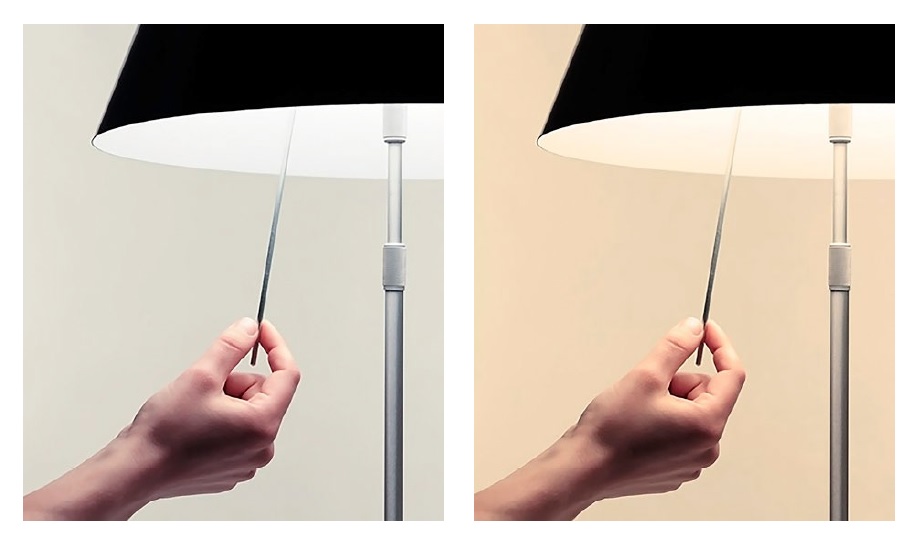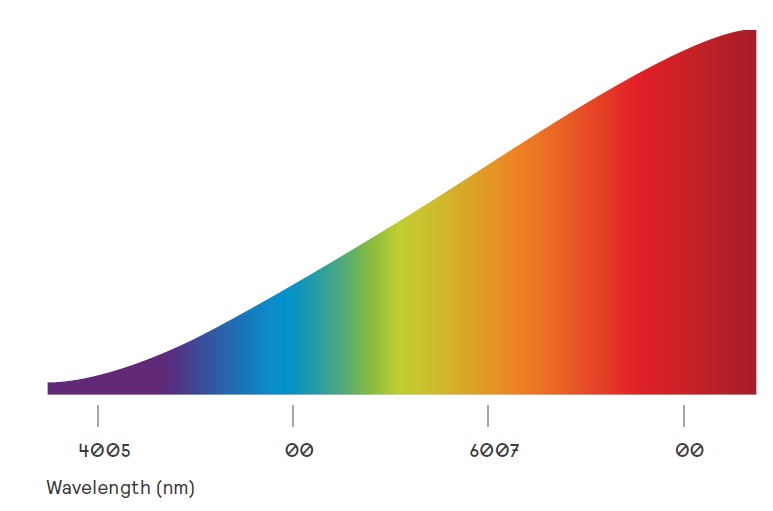Over the past couple of weeks, we’ve uncovered factors that contribute to the quality of lighting. Factors include:
- Lighting Levels
- Spatial distribution of light
Click on items from the list above to view articles from previous weeks.
This week, we’re delving into the Colour of light...
Colour temperature
Visible radiation (light) is emitted when an object is heated. The colour of this light depends on the temperature of the object. This dependency is used to quantify the white tone of lamps. Colour temperature objectively describes the white-tone of a light source.
Colour temperature is expressed in Kelvin (K) – the base unit of temperature. For example, an incandescent lamp has a colour temperature of around 2700K – 2800K, and is yellowish-white in appearance. Generally, the lower the colour temperature, the warmer and more reddish the colour of the light will be. Alternatively, the higher the colour temperature, the cooler and more blue-ish the colour of the light will be.

Light Spectrum
A spectrum is a term used to describe the composition of light emitted by a light source. Light spectrums show the composition of the various colours or wavelengths of the emitted light.

Spectral composition of light
The colour appearance of a light source radiating a white light is determined by the spectral composition of its light. It can be characterised by its colour temperature. A white light source with a high proportion of red and thus a low colour temperature will appear warmer, e.g. an incandescent lamp. On the other hand, daylight for example, appears cooler as it is a white light source with a higher proportion of blue and thus, a higher colour temperature.
It is the spectral distribution of the visible radiation emitted by a light source that determines both the colour rendering capability of the source and the colour appearance received when looking at the source.
These two characteristics determine the colour impression received from the lighted scene.
Colour rendering
Proper colour rendering is important in order for objects to be seen in their ‘true’ colours. The SABS provides standards and recommendations of minimum values for the general Colour Rendering Index (CRI) of various indoor and outdoor lighting applications. Click here to preview the South African National Standard for Interior Lighting, SANS10114-1:2020 Edition 4.
Learn more about the colour in lighting!
Click here to watch a quick video on light and colour.
Click here to watch a quick video on colour temperature.
Need a lighting solution for your facility? Click here to chat to one of our lighting experts now!
What’s next in this lighting quality series?
In the next article, we will be discussing the economics of light which will touch on topics such as lighting installation, and lighting control. Watch this space to catch the full discussion!
Source: Signify “The Science of Lighting” by Wout van Bommel and Abdo Rouhana (2019: second edition)

